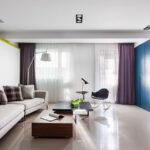The history of military buildings in Minsk
Did you know that the modern Suvorov Military College used to be a theological seminary, while the Investigative Committee was a military hospital? where Minsk has gathered the most interesting facts about some military buildings in Minsk.
Alexander Shestopalov
First priests, then officers
Some houses and constructions can be used for different purposes over the time. For example, in Minsk there are two buildings – the Suvorov Military College and the Central Officers’ House – that originally were religious buildings, although now you can hardly find a trace of what they used to look like.
An interesting fact: before the 18th century stone churches had been built as a part of the defense system of a city. It means that they could be used as fortifications when necessary.
The modern design of the Suvorov Military College was created in 1953, when a former theological seminary was reconstructed. Two extra floors were added and the construction became bigger in terms of length and width. The building wasn’t erected for the educational purposes though; in fact, the seminary was opened there only in 1840 (according to other sources – in 1853). Before that it was said to be a Mariavite Nunnery founded approximately at the same time of the Napoleonic Wars. After the 1917 Revolution the seminary was abolished. In the interwar period there were Minsk Infantry Courses and a bit later a military middle school called United Belarusian School. Thus even though the building wasn’t originally meant to become a school, its main function since the middle if 19th century has been educational.
Two buildings (or rather what was left of them – walls and cellars) became the foundation of the Central Officers’ House (1934-39). Both were religious: one of them was the Pokrovski Church (used for the left wing of the modern building) and the other was a pontifical house (used for the central facade). There was not much left of them compared to, for example, the abovementioned seminary. The architecture maitre Iosif Langbard was able to keep only a few elements when he created the Officers’ House. By the way, the Officers’ House and his other major works survived the war. It’s a kind of a miracle!
The Central Officers’ House is not just a military club. It is a huge cultural and methodological centre that has 8 floors: 4 above the ground and 4 below. There is a library of 120 000 books, an academic ensemble, a drama theater, an art studio, foreign language courses and much more based there.
Two towers
In 1940-50s when Minsk was recovering after the war and even later on in 1960s small towers were quite popular. You can find the most beautiful ones on the building of the Committee for State Security, and on the so-called ‘House under the spire’.
The BSSR Committee for State Security building (1945-47) is one of the most prominent examples of Neoclassicism, or the Stalin Empire style. The architects wanted the new Minsk to be designed to resemble an antique city. Besides they tried to utilize some parts of the constructions that hadn’t been fully destroyed during the war. That’s why in many buildings erected at that time you can find some traces of pre-war and even pre-revolutionary constructions. For example, in the modern Committee for State Security there are elements of the pre-revolutionary building of Agricultural Mutual Insurance Association.
Initially, there should have been a tower with a spire at one of the corners of the building. But as it was very difficult and expensive to construct it (the spire was supposed to be covered with gold leaf), the architects decided not to implement the idea. There are many legends about the tower though: some say that Lavrentiy Tsanava, the head of the BSSR Committee for State Security, had his office there; others claim that the tower was built especially for him to watch football games at the Dinamo stadium located nearby. There had never been an office up there though, and it is impossible to see anything going on at the stadium even through binoculars.
The ‘House under the spire’ (1952-56) was one of the last constructions created in the Stalin Empire style. The buildings along Praspiekt Niezaliežnasci (Independence avenue) behind the Victory Square are designed in other styles. This building though was constructed together with other four residential houses for the officers’ families of the Belarusian military district. Because of the spire with a star and bay leaves on top (at the height of 43 meters) and as the house is standing on a hill, one can see this building from afar in any season of the year. The spire is covered with high-tensile steel.
Empire once again!
Both to the North-West and to the South-East of the Victory Square there are two more neoclassical buildings located almost at equal distance from the square. The one near the ‘House under the spire’ used to be the headquarters of the Belarusian Military District and today it is the Ministry of Defense of the Republic of Belarus. The other one is the Investigative Committee of Belarus. The latter is almost 200 years old! Before the Revolution the building was a medical facility for the military (infirmary, hospital). In the 19th century there were troops located in Minsk; and back then there were officers’ and soldiers’ barracks along the modern Pervomaiskaya street. The military men were treated in what was then the suburbs of the city, near forests and fields, which helped them cure faster.
Few changes were made to the construction after the war: the central part of the modern house as well as its wings look very similar to the building in the old pictures. The porticos with columns of the Ionic and Corinthian order that were built during the reconstruction only add to its grandeur and monumentality. The headquarters of the Belarusian military district was erected from scratch, yet it was built in the same style as the hospital. They are really similar.
The Cold War echo
It is very difficult to get land in central Minsk. The plots are rarely allocated and when they are, the prices can be soaring high. Yet, investors are fighting for them. It is strange though that amid all the bustle they don’t notice a perfect place in the very heart of the city where they can create basically anything: from a small production point to an art centre. It is the former communication centre that was actively used in the 50-70s. It is located on the banks of Svisloch, near the head office of the bank “Moscow-Minsk”. People who don’t know the history of the place are most likely not to pay attention to it as it is more or less hidden. It is a hill with a parking lot on top of it. There are three entrances that lead under the ground.
At one of the corners of the parking lot there is a kind of a small concrete box. If you take a closer look at it, you’ll notice that it is a machine gun pillbox. The construction was erected by the Nazi during the war and was used as a radio communication centre.
The main exhibit
Another very important building even though it is a modern one is the building of the Great Patriotic War Museum. Usually visitors appreciate not the building alone, but rather the museum as a whole: with its exhibits and special atmosphere. One of the exhibits that evokes the strongest feelings is a letter written by a Red Army soldier on May 9, 1945. It say only: “Mother, I survived”.


